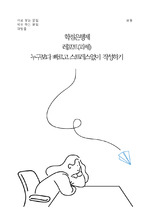한국 교실 문화와 의사소통중심교수법 -Korean Classroom culture and Communicative Language Teaching
*서*
다운로드
장바구니
소개글
한국 교실 문화와 의사소통중심교수법에 대한 영문 레포트 입니다.목차
없음본문내용
Cultural Clash in the Language ClassroomKorean Classroom culture and Communicative Language Teaching
There is growing recognition that the aim of language education is attaining communicative skill. Approaches or methods that we have used in language class were not suitable for developing communication ability. So communicative language teaching (CLT) has compelled our attention and became the byword. Every textbook and institute are containing that term and empathizing the effectiveness of using communicative language teaching. We can`t go against the current of communicative language teaching.
Based on the David Nunan (1991)`s five basic characteristic of communicative language teaching and H. Douglas Brown (2001)`s six interconnected characteristics as a description of CLT, CLT is emphasizing on leaning to communicate through interaction and using authentic text. And CLT help student find out their own learning styles and proper learning strategies and cognitive strategies. Learners` own experiences can be the important sources of the language classroom. And Use language outside the classroom is encouraged. Fluency and accuracy are both important. But Fluency sometimes takes on more importance than accuracy. All four skills of language - speaking, listening, reading and writing have to be taught in the class. Cooperative and collaborative task is critical in CLT classroom. Teacher`s role is just facilitator in learner-centered classroom.
참고 자료
● H. Douglas Brown. (2000). Principles of language learning and teaching. Fourth edition. Longman● H. Douglas Brown. (2001). Teaching by principle. Second edition. Longman
● Eland, A. J. (2001). Intersection of Academics and Culture: The Academic Experience of International Graduate students. Unpublished dissertation, University of Minnesota
● Hye-Yeon. (2003) Lim. Successful Classroom Discussions with Adult Korean ESL/EFL Learners. The Internet TESL Journal, Vol. IX, No. 5, May 2003
● Bea, S., & Pashby, p. (2002). Korean students’ perceptions of ESL classroom interaction. Paper presented at the Annual Conference of Teachers of English to Speakers of Other Language, Salt lake, UT.
● Lim, H.-Y. (2002). The interaction of motivation, perception, and environment: One EFL learner`s experience. Special Issue of The Hong Kong Journal of Applied Linguistics, 7(2), 91-106
H. Douglas Brown.(2000). Principles of language learning and teaching. fourth edition. (p.238)
10



























